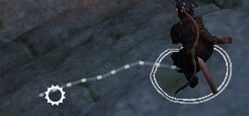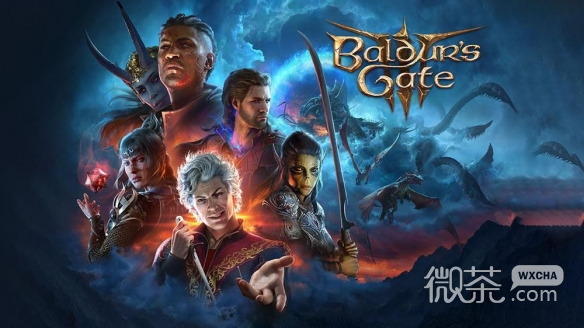Where can I find a list of terms used in the game "Baldur's Gate 3"? I believe that many netizens have this kind of trouble. It’s very troublesome if others keep talking about it but you don’t know it. For this reason, the editor has compiled and shared the relevant strategy content below to help you easily solve this trouble. Come and take a look. Not what you need!
roll dice
All tests in the game are determined by rolling dice. 2d6 means rolling two 6-sided dice and taking the sum of the dice values as the test result.
After entering the battle, each character will perform a 1d20 action check. The check value plus your agility adjustment value determines the order of actions of both parties, and is displayed in the upper left corner.
Each character's turn usually has several resources available to him: an action, a bonus action, several spell slots, and some special resources, such as a cleric's class power and a wizard's arcane recall charge. Detailed resource requirements will be described below each skill. There is only one action and bonus action per turn, and the rogue can obtain additional bonus actions through level three upgrades, while spell slots and special resources can only be restored through long or short rests.
Generally speaking, the hit result of a skill is equal to the hit roll 1d20 + attribute modifier + proficiency bonus. If it exceeds the opponent's AC, it is a hit. A skill's damage result is equal to the damage roll + ability modifier. Damage rolls and ability modifiers are displayed on your skills.

Exemptions (Important)
Each skill is divided into attack and immunity. If it is an attack after the colon, it is an attack. If it is an attribute, it is a immunity. The attack will measure the hit rate. If it hits, it will take effect, and the hit rate is determined by the user. The saving throw is guaranteed to hit but may not take effect, and the person hit makes the saving throw. Note that skills like Frost Ray have two stages of effect, damage and surface creation, since damage is an attack and slipping on a frost surface is a saving throw.
surface effect
There are a lot of surface effects in the game, some of which can be created using skills. Surface effects can be reacted and cleared. For example, frosty surfaces react with fire to generate clouds. Some surfaces will have disadvantage effects or more special effects.
long rest
In the third option in the upper right corner of the map, go to the camp and end today's activity. That is, you can only take one long rest per day. It can restore all health of the team, charge all skills, and restore all spell slots and special resources. At the same time, it advances the plot and triggers special plots.

short break
Below the long rest options, take a short rest. A long rest is also considered a short rest, i.e. two short rests are taken in one day. A short rest can restore half of the blood volume, round down, recharge some skills, and restore the magician's spell slots.

death saving throw
When a friendly character's health reaches zero, he will enter a death roll once per round. After three successes, he will enter a stable state and no more death rolls will be made. After three failures, you will die and can be resurrected through resurrection. The death roll state can be escaped through the healing effects or assistance skills of teammates. Note that the stable state still requires treatment or assistance to escape.
push away
Use an additional action to push the target up to 4m away, which is guaranteed to succeed against an unsuspecting target. This skill can push the enemy off the cliff to achieve a one-hit kill, or push the enemy off the high ground to gain an advantage, pushing the enemy away to prevent reaction actions.
hide
Use an extra action to hide (needs to be in the opponent's blind spot). After entering the hidden state, it is difficult to be discovered as long as you do not enter the enemy's line of sight. In the hidden state, the surface will be divided into three parts, blank area, light obstruction and heavy obstruction. When you hide, your path forward The destination category will be displayed.






Advantages/Disadvantages
When a character is at an advantage. His attacks are easier to hit, with the opposite disadvantage. Generally speaking, you can create an advantage by standing on high ground and performing long-range attacks, using light weapons to backstab, or some spells, actions, and special attributes.
frightened
When a creature is near you, your ranged attacks are at disadvantage.
Blow
A critical hit occurs when you roll a 20 on a hit roll, and your damage roll is doubled plus your normal ability score modifiers.
Hit points
That is, life value. Some special skills use health value determination, such as sleep. As long as the target's health value is less than the requirement, the hit will definitely take effect, unless there are special effects to prevent it from taking effect.
focus
Some sustained skills require concentration, and their effects will remain in effect until you take damage or you cast a concentration-requiring skill again.
AC
Armor level, a value equal to the armor you wear plus your Dexterity modifier. The enemy's hit result must be higher than your armor rating to hit.
DC
Saving difficulty, the value is equal to 8 + the caster's proficiency bonus + the caster's attribute adjustment value. The caster calculates 1d20 + the caster's saving throw proficiency bonus + the caster's attribute adjustment value. If the result is less than DC, it cannot exemption.

The above content is all the content that the editor has brought to you. Here, the editor sincerely hopes that the overview of each terminology in the "Baldur's Gate 3" game can be helpful to you and solve the problems you encounter. If the problem cannot be solved, then I am deeply sorry.